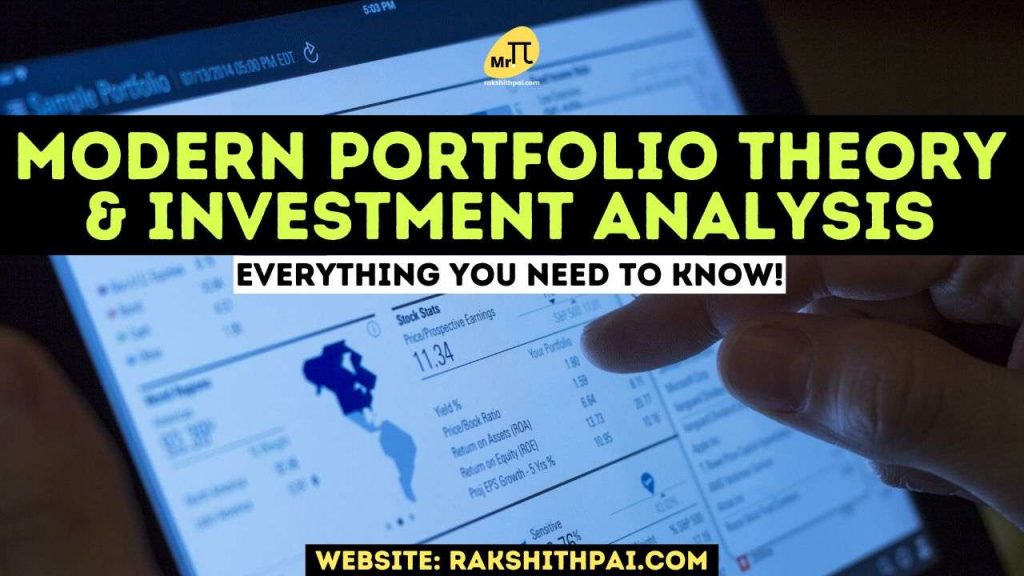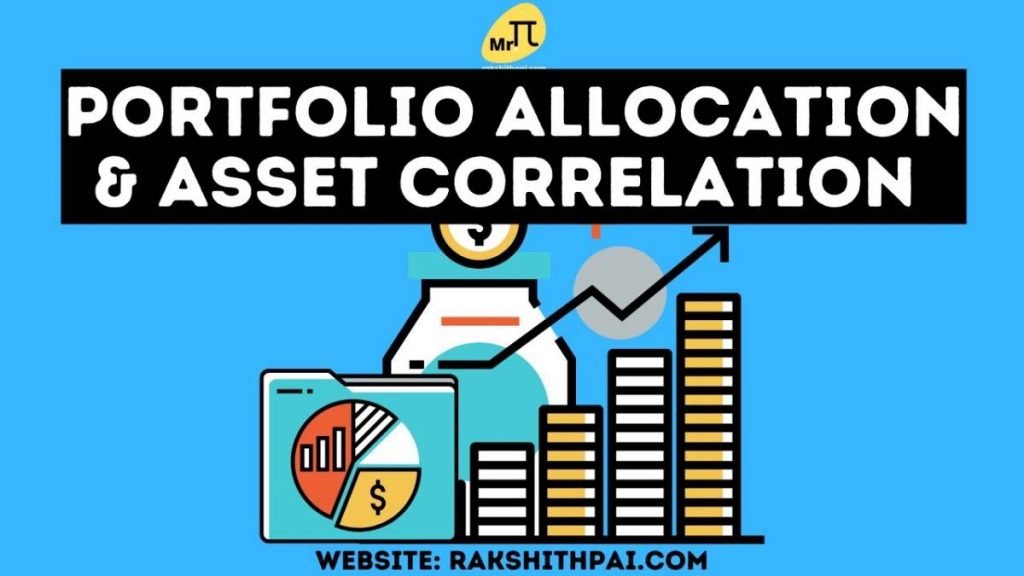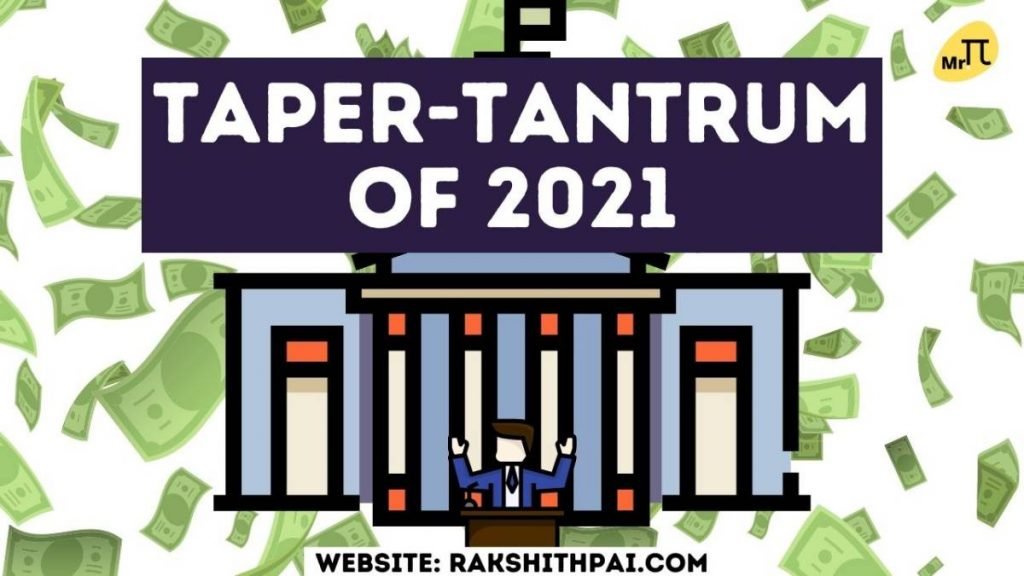Table of Contents
What Is the Modern Portfolio Theory (MPT)?
With the Modern Portfolio Theory (MPT), investors may construct asset portfolios that optimize anticipated returns while maintaining a specified level of volatility. Investor Theory says that investors are afraid of taking risks and will always choose the portfolio with the least risk for the same amount of predicted return.
Modern portfolio theory (MPT) is based on the idea that diversification lowers risk, which is one of its most important ideas. Because of this, higher anticipated returns are required by Modern Portfolio Theory for investors who take on more risk.
In 1952, an American economist named Harry Markowitz published “Portfolio Selection” in the Journal of Finance. This was very important work. The current portfolio theory he pioneered earned him the Nobel Prize in economics.
The MPT theory emphasizes diversity as a major component. It’s rare to find an investment that is both high return with low risk and vice-versa. Investors, according to Markowitz, may maximize their returns by selecting an appropriate combination of the two based on their risk tolerance.
How to Diversify Your Stock Portfolio
What Does the Modern Portfolio Theory (MPT) Tell?
By examining how an investment’s risk and return impact the portfolio as a whole, current portfolio theory proposes that risk and return characteristics should not be examined in isolation. Investors can combine different investments to make a portfolio that is more profitable without increasing the overall risk.
Investors can also build a portfolio with the lowest possible risk that can provide the desired amount of projected return, starting with the desired return. According to statistical measurements like variance and correlation, the success of a single investment is less relevant than how it affects the overall portfolio.
For example, a portion of a stock investor’s portfolio can be reduced in risk by investing in government bonds or bond ETFs. Because government bonds have a negative correlation with equities, So, the portfolio’s variance will be greatly reduced. With this effect, it is unlikely that a small additional investment in Treasuries will make a big difference in the predicted returns.
Investors can also use gold and silver, which have a negative correlation with equity. This way, by understanding the behavior of the asset, investors can allocate their portfolio so that the least correlated asset to one another is chosen.
Assumptions Used in Modern Portfolio Theory (MPT):
- Investors are rational and want to realize the best possible utility (satisfaction) of their investments.
- Investors prefer the lowest level of risk, and for a given level of risk, want the maximum possible return.
- When making decisions, investors consider only risk and return.
- Risk is represented by the standard deviation (variance).
- Investors have full access to all relevant investment information.
- An investor cannot manipulate, or take advantage of, the market, because it is perfectly competitive.
What is Asset Correlation?
The correlation of assets is a way to measure how well one type of asset has done compared to another. It also means how one asset reacts to another. The term “highly correlated” refers to the tendency of two assets to move in lockstep. These asset types are said to be negatively connected if they move in the opposite way.
For example, when the stock market rises, people will flock into the market more over time. This will reduce the investor’s incentive to hold gold. In such a case, gold demand may be reduced, and so does the price of gold.
When the return on one asset class rises, the return on the other asset class rises as well. In general, the more closely they are related, the more strongly they are linked. If both the assets were positively correlated, point (1) would be allocated, which means that the assets are perfectly positively correlated.
When the returns of two asset classes move in the opposite direction, we say there is a negative correlation. In this case, the return of one asset type is higher than that of the other. A correlation of 0 means that there is no link between the two things, while a correlation of -1 means that there is no link at all or a negative correlation.
Diversified asset allocation leads to wealth creation.
Benefits of the Modern Portfolio Theory (MPT)
MPT is a great tool for those who want to diversify their portfolio. In fact, the rise of ETFs has made the MPT more important because it has made it easier for investors to get access to a wide range of asset classes.
If the portfolio is well diversified, the portfolio’s distinctive risk is reduced or eliminated. due to the fact that losses in one asset are likely to be compensated for with gains in another (which is negatively correlated).
Unsystematic risk, on the other hand, refers to the risk that is unique to each asset, whereas systematic risk refers to the risk that affects the whole market. Systemic risk can’t be reduced by diversification because this risk is present in every asset.
There are several strategies to diversify a portfolio. Various sectors, asset classes, markets (i.e. nations), and risk levels can all have assets. To have a well-diversified portfolio, you need to hold assets that aren’t all linked in a positive way. I.e, Assets must be negatively correlated.
Drawbacks of the Modern Portfolio Theory (MPT)
When evaluating portfolios, the MPT looks at volatility instead of potential downside risk, which is a big problem.
In other words, under current portfolio theory, two portfolios with the same degree of volatility and return are regarded as equally acceptable. A portfolio’s volatility may be attributed to the frequency of modest losses. Another might have that variation due to unusual but spectacular reductions.
The majority of investors would prefer smaller, more frequent losses. Instead of holding on to the asset in the hope that asset correlation theory will prove itself. It is the goal of post-modern portfolio theory (PMPT) to reduce downside risk rather than variation in order to improve upon modern portfolio theory.
Conclusion:
Investing for individuals was revolutionized with the advent of modern portfolio theory (MPT). As a result, cautious investors may fare better by diversifying their portfolios with both low-risk and high-risk investments. As a result, it implies that the more lucrative alternative need not necessarily increase the total risk. This is the most important characteristic of a well-diversified portfolio.
In addition to the particular risk that each item in a portfolio has, the Modern Portfolio Theory emphasizes the link between those assets. An asset with a low negative correlation is used to offset the gains or losses of another. Crude oil prices and airline stock prices, for example, have a negative relationship.
Watch YouTube Video for More Information:
Disclaimer: All the information on this website is published in good faith and for general information purposes only.









